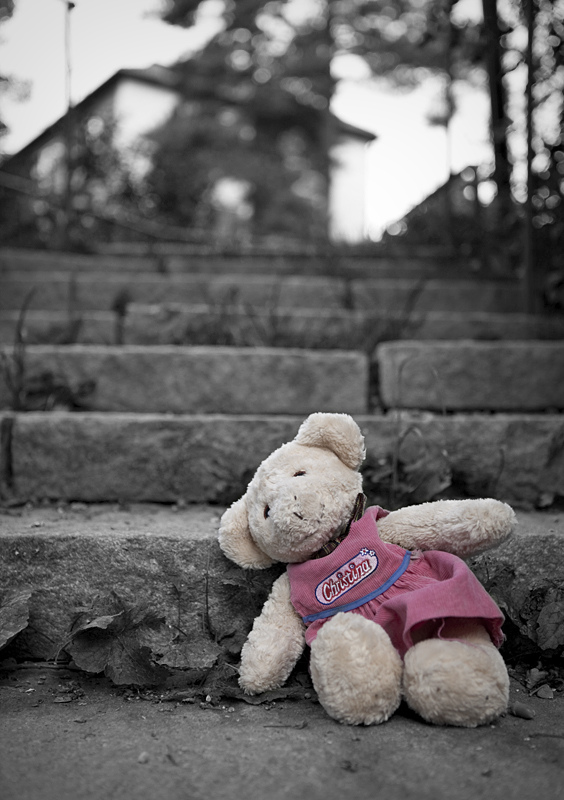Why do so many of the nation’s foster care youth end up living on the streets as adults? Several experts weigh on why the transitions to adulthood are so difficult, as well as the structural flaws of the country’s foster care system.
Neil Donovan, executive director for the National Coalition for the Homeless, sees a distinct relationship between foster care youth and homelessness.
 “There are some who say that the likelihood that someone will become homeless if they had been a part of the foster care system could be as many as 11 times greater than the average child,” he said.
“There are some who say that the likelihood that someone will become homeless if they had been a part of the foster care system could be as many as 11 times greater than the average child,” he said.
“What we’ve found is, the foster care system oftentimes has a number of different masters.”
And when resources are more limited, he said “inappropriate discharges tend to spike.”
Donovan said that inappropriate discharges—essentially, when children are emancipated from foster care services before the age of 18—drastically increase the likelihood of youth becoming, and staying, homeless.
“When a person is basically inappropriately discharged [that] individual falls into homelessness, and the likelihood that person will have the skills and stability and resources to move themselves out of the situation —pulling themselves up, and into permanent housing—it is just a reality that is rarely seen,” he said.
“Given this occurs time and time again, when the economy worsens, when resources are fewer, inappropriate discharges tend to rise.”
Donovan said that this is a problem that doesn’t just affect children. He said that his organization has an employee, currentl part of the National Coalition for the Homeless’ Speakers’ Bureau, that was inappropriately discharged as a youth.
“He was asked whether or not he wanted to discharge to the streets when he was 14 years of age,” he said. “So he signed the paper, and 42 years later, he was still homeless.”
In many instances, Donovan said that inappropriate discharges are the initial cause of homelessness in the country, stating that he believed “there’s a huge relationship between the two.”
Donovan said that gauging the exact number of homeless youth in the United States is difficult, since official enumerations, for all intents and purposes, are not tracked.
“For instance, the Census the last two decades has actually sued for the ability to not term the homeless people, so we have no real good information about how many homeless people there are in the country,” he said.
Accurate data regarding homeless youth is even more difficult to obtain, he said, citing a disconnect between the agencies in charge of tallying both the nation’s homeless and the nation’s juvenile population.
“The information we get when we’re talking about who’s homeless is received from the U.S. Housing and Urban Development,” he said. “One of the problems there is that they have a definition of ‘homelessness’ which is different than the Department of Education.”
These discrepancies between the Department of Housing and Urban Development and the Department of Education—the federal agency in charge of officially enumerating the nation’s children—results in massive oversights, he said.
“When you try to gleam statistics out of the numbers that exist, it’s really an unfortunate apples-to-oranges, or really, apples-to-wood [comparison]. It’s a completely different conversation,” he said, citing school system reports from 2011 that we’re discounted due to federal standards.
“Of the 770,000 children who live doubled up or in shelter, 660,000 were not reported to Congress,” he said. “So six out of every seven children were not reported to Congress as being homeless.”
According to the National Alliance to End Homelessness report “The State of Homelessness in America 2012,” an estimated 636,017 people were homeless in America in 2011. Of that, almost 40 percent of the population was categorized as “families with children,” indicating at least 77,000 homeless children are currently living on the streets of the United States.
“We’ll place a child in an independent living program for a year prior to emancipation or independence with just an assumption that they have become independent,” said Joe Leshko, president and chief operating officer for Arrow Child & Family Ministries’ Maryland operations. “Because the kids have been in such a dependent-driven system for so long [however], it’s tough to just turn on a dime and become independent overnight.”
According to Leshko, the primary problem with foster care and congregate care is an over-reliance on “dependent-based” services for children.
“Our system is a dependent-driven system,” he said. “Kids in care, regardless of what state they’re in, they get clothes when clothing allowances come. They wake up, usually if they are in any kind of congregate care, when staff wakes them up. They eat their meals when dinnertime is on the schedule.”
He believes the structural and institutional systems of the like need to be “broken,” so that children in foster services are allowed to “enjoy, engage, accept and understand independence before they’re just operating in the middle.”
Leshko said that if the nation wants to remedy its foster care problems, he envisions two possible solutions.
“If it becomes apparent that a child is going to remain in state care and the system for a long period of time, there still needs to be [efforts to] maintain, establish and improve the relationship with bio-family,“ he said. “Maybe not mother, maybe not father, but there has to be a familial connection so that child has relationships as he moves forward and moves toward independence.”
If maintaining connections with biological family members cannot be achieved, he encourages a system that would promote “more of a permanent-base foster care.”
“We have to move towards an understanding with foster parents that this is not just a temporary connection,” he concluded.
Photo courtesy of Ulrica via Flickr.





























